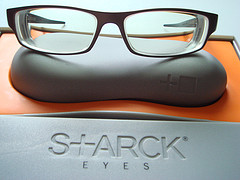 Myopia or nearsightedness is a common vision problem affecting four of every ten people. Eyeglasses are used to correct this problem and prescribed either to be worn occasionally like driving or watching a movie or for full-time use when a person has difficulty seeing at most distances. There are so many nearsighted glasses selection that suit individual choices.
Myopia or nearsightedness is a common vision problem affecting four of every ten people. Eyeglasses are used to correct this problem and prescribed either to be worn occasionally like driving or watching a movie or for full-time use when a person has difficulty seeing at most distances. There are so many nearsighted glasses selection that suit individual choices.
Frames for nearsighted glasses come in three styles, plastic, rimless and metal. The style that works well will depend on the prescription. The higher the base number the thicker the edge of the lenses. Plastic frames provide the most stability and choice of color for many heavier prescriptions. For mild to moderate prescriptions, metal frames work well. Rimless frames have less frame material and the edge of the lens will be more obvious.
Plastic lenses are more shatter-resistant and lighter. There are various kinds of plastic lenses such as hi-index, polycarbonate, photochromic and aspheric. Polycarbonate is the most shatter resistant and a good option for nearsighted persons who are active in sports and also for children. Aspheric lenses are specialty lenses designed with special curves that allow the lens to be flatter and thinner compared to other lenses and provide a crisper vision than standard lenses. Photochromic lenses are made either of plastic or glass and have are lighter indoors and darker when outdoors. High-index plastic lenses are thinner and lighter than traditional plastics but are more expensive.